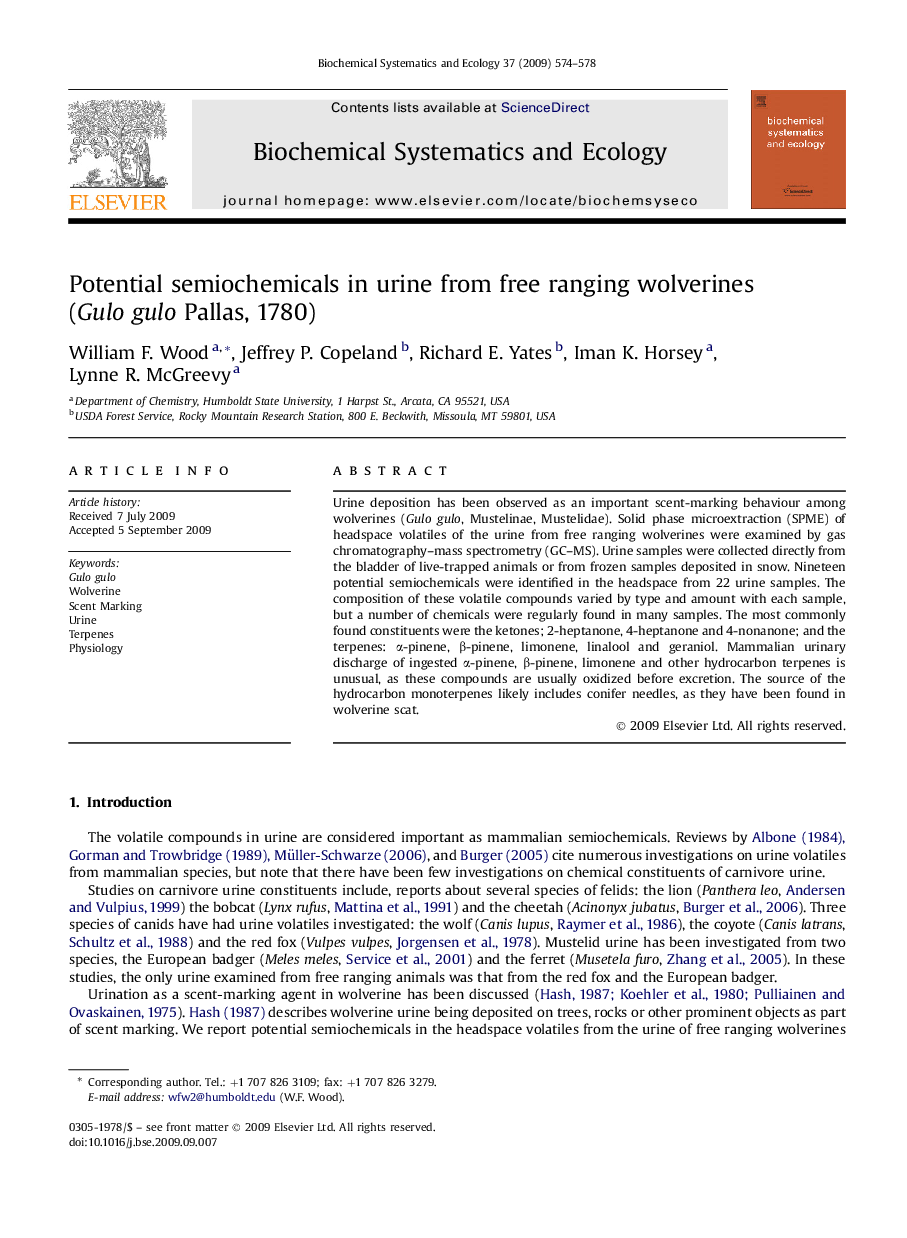| Article ID | Journal | Published Year | Pages | File Type |
|---|---|---|---|---|
| 1354550 | Biochemical Systematics and Ecology | 2009 | 5 Pages |
Urine deposition has been observed as an important scent-marking behaviour among wolverines (Gulo gulo, Mustelinae, Mustelidae). Solid phase microextraction (SPME) of headspace volatiles of the urine from free ranging wolverines were examined by gas chromatography–mass spectrometry (GC–MS). Urine samples were collected directly from the bladder of live-trapped animals or from frozen samples deposited in snow. Nineteen potential semiochemicals were identified in the headspace from 22 urine samples. The composition of these volatile compounds varied by type and amount with each sample, but a number of chemicals were regularly found in many samples. The most commonly found constituents were the ketones; 2-heptanone, 4-heptanone and 4-nonanone; and the terpenes: α-pinene, β-pinene, limonene, linalool and geraniol. Mammalian urinary discharge of ingested α-pinene, β-pinene, limonene and other hydrocarbon terpenes is unusual, as these compounds are usually oxidized before excretion. The source of the hydrocarbon monoterpenes likely includes conifer needles, as they have been found in wolverine scat.
